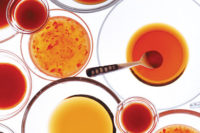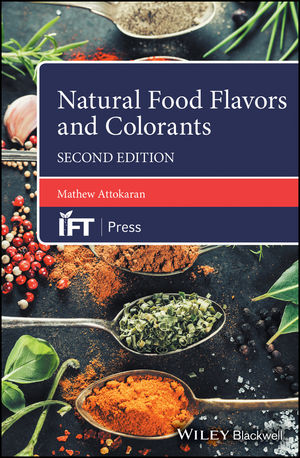
Imagine tasting a jelly candy flavored with the essences of carrot and beet. How about chocolate infused with Thai basil and kefir lime? Sound a bit far-fetched? Perhaps. But then who believed that chocolate and bacon would make a nice pairing?
The key, at least according to several experts, is that the world of natural flavors is evolving beyond just taste into a universe that delivers a whole range of wellness benefits.
Consider the following factoid from Mintel, a Chicago-based international market research firm: New confectionery products boasting “naturally flavored,” “natural flavors” or “no artificial flavors” increased by 182% in North America between 2003 and 2008. The percentage is even greater in Europe - 456%.
“Clean labels, natural flavors, and organic products are a global trend that spans all food segments,” says Jon Seighman, Givaudan flavours applications manager, sweet goods.
So what’s going on here? First, consumers perceive products featuring the terms naturally flavored, natural flavors and no artificial flavors in a better light than those containing artificial ingredients and/or preservatives.
Moreover, natural flavor claims often are seen in conjunction with other positioning trends, like premium, “eco-friendly” and vitamin-enhanced, says Barb Pugesek, market manager for FONA International in Geneva, Ill.
It’s a trend that dovetails nicely with consumers’ desires to simplify their lives. Thus, simpler ingredient statements and packaging reaffirm lifestyle preferences.
However, simpler does not mean boring. The world of all-natural flavors encompasses an enormous storehouse of subtle as well as splashy flavor notes. That flavor palette becomes even more complex when combined with other ingredients to produce specific health and psychological benefits for consumers.

Max Müller, senior technologist sweets & confectionery at Frutarom, displays research and development projects in the works at the company’s Innovation Center in Switzerland. Photo courtesy of Frutarom.
Today, there’s a movement toward using natural botanical extracts such as chamomile, lavender and hibiscus, he says. These botanical extracts - when combined with an ingredient such as chocolate - deliver a variety of higher-end benefits to the consumer.
“The benefits associated with these ingredients can improve one’s emotional wellness, providing consumers subliminal or implied benefits such as relaxation, a calming effect, even happiness,” Shemer says.
The concept of formulating natural flavor benefits often begins right in the laboratory. As Frutarom’s Max Müller, senior technologist, sweets & confectionery, explains, “Either a sudden idea comes into our mind or we proactively formulate a trend into a creative concept. Or we start from customer’s parameters, based on clear requirements and needs, and often combined with a certain function in mind.”
Recently, Müller, as part of a comprehensive Frutarom initiative targeting “energy” in all its facets, focused on using naturally stimulating ingredients and herbal extracts. “In this case, we were totally free to choose whichever flavors and extracts we wanted, as long as we met the “energy” theme,” he says.
In the end, Müller’s team chose ginseng and schisandra (a shrub native to East Asia whose fruit is used for medicinal purposes) to give vitality to their energizing sweets, plus guarana, green tea and maté (leaves from a small tree native to subtropical South America) to provide natural caffeine. These combinations resulted in indulgent products that offer an extra “boost.” One example is “Energesso,” an energy candy targeted at adults looking for a pocket-sized energy kick. The product is flavored with mocha cream, natural coffee extract and vanilla cream, and contains natural caffeine from guarana. Two of these energy-packed candies give the same boost as one serving of espresso.
Another candy called “Paso Doble” combines passion fruit, lime, ginger and fennel extract to create a taste that is full of vitality, while natural caffeine from guarana and maté extract provides energizing power.
According to Müller, depending on the formulation, the development of “clean label” energy confections is conceivable using natural flavors and even fruit juice.
This past May, Bell Flavors and Fragrances held a “Flavorology” tasting just before the National Restaurant Show in Chicago. As the Northbrook, Ill.-based company explained, “Flavorology is the education and communication of our new technologies and flavor profiles to our key customers so that they can be successful in delivering market leading products.”
Amidst nine tables of innovative new products featuring distinct new flavor combinations, Cindy Cosmos, senior flavorist at Bell Flavors and Fragrances, manned the Flavor Sensates table. She tempted attendees with chocolates using Madras yellow curry and chile flavors as well as hard candies containing chile and watermelon flavors. Meanwhile, at the Floréal Flavor table nearby, milk chocolates with orange blossom notes and marshmallows with a dash of lavender expanded flavor expectations.
It’s clear that flavor houses throughout the world are expanding everyone’s notions of flavor profiles and benefits.
“Unique flavor combinations are always in demand, and depending on the product, the more exotic the flavor is, the better the product is perceived,” adds Seighman. He cites recent examples developed by Givaudan flavorists, such as Lo Porto Lemon (a uniquely floral flavor profile) and Tarocco Orange (a type of Blood Orange with a uniquely sweet orange flavor profile).
As Müller points out, “We will never reach a dead end when it comes to dreaming up new confectionery concepts. There will always be an innovative idea, a new trend, another extract or an untapped consumer group giving us the impetus for a whole new field of development.”
Top 10 Sweet Flavors
Acai (berry with subtle chocolate aftertaste)Yuzu(grapefruit with undertones of mandarin orange)
Guavasteen(pineapple guava; sweet, tropical flavor)
Red or Black Currants(sweet and sharp taste)
Acerola(juicy with a sour and sweet taste)
Lychee(delicately sweet)
Camu Camu(extremely acidic)
Marula(tart with a strong turpentine flavor)
Persimmon (sweet, slightly tangy fruit)
Fig(juicy, sweet and fragrant fruit)
Source: Bell Flavors and Fragrances








